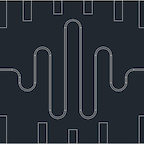
Proposal for generating and detecting multi-qubit GHZ states in circuit QED
Type
We propose methods for the preparation and entanglement detection of multi-qubit Greenberger–Horne–Zeilinger (GHZ) states in circuit quantum electrodynamics. Using quantum trajectory simulations appropriate for the situation of a weak continuous measurement, we show that the joint dispersive readout of several qubits can be utilized for the probabilistic production of high-fidelity GHZ states. When employing a nonlinear filter on the recorded homodyne signal, the selected states are found to exhibit values of the Bell–Mermin operator exceeding 2 under realistic conditions. We discuss the potential of the dispersive readout to demonstrate a violation of the Mermin bound, and present a measurement scheme avoiding the necessity for full detector tomography.
We propose methods for the preparation and entanglement detection of multi-qubit Greenberger–Horne–Zeilinger (GHZ) states in circuit quantum electrodynamics. Using quantum trajectory simulations appropriate for the situation of a weak continuous measurement, we show that the joint dispersive readout of several qubits can be utilized for the probabilistic production of high-fidelity GHZ states. When employing a nonlinear filter on the recorded homodyne signal, the selected states are found to exhibit values of the Bell–Mermin operator exceeding 2 under realistic conditions. We discuss the potential of the dispersive readout to demonstrate a violation of the Mermin bound, and present a measurement scheme avoiding the necessity for full detector tomography.

